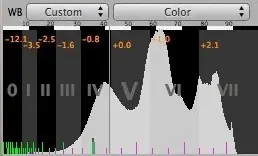jwbryson1
TPF Noob!
- Joined
- Apr 21, 2011
- Messages
- 4,280
- Reaction score
- 949
- Can others edit my Photos
- Photos OK to edit
Can a histogram be used to determine how far your image is underexposed or overexposed?
For example, just from looking at the image of the histogram can you ascertain that your photo is 1 stop underexposed or 2/3 stop overexposed, etc?
Or do you just use the histogram to determine how close you are to both extremes (clipped or blown), and make appropriate adjustments from there?
Thanks!
For example, just from looking at the image of the histogram can you ascertain that your photo is 1 stop underexposed or 2/3 stop overexposed, etc?
Or do you just use the histogram to determine how close you are to both extremes (clipped or blown), and make appropriate adjustments from there?
Thanks!


![[No title]](/data/xfmg/thumbnail/34/34126-2956b6786a44f993f9aad43e097be84c.jpg?1734164626)










